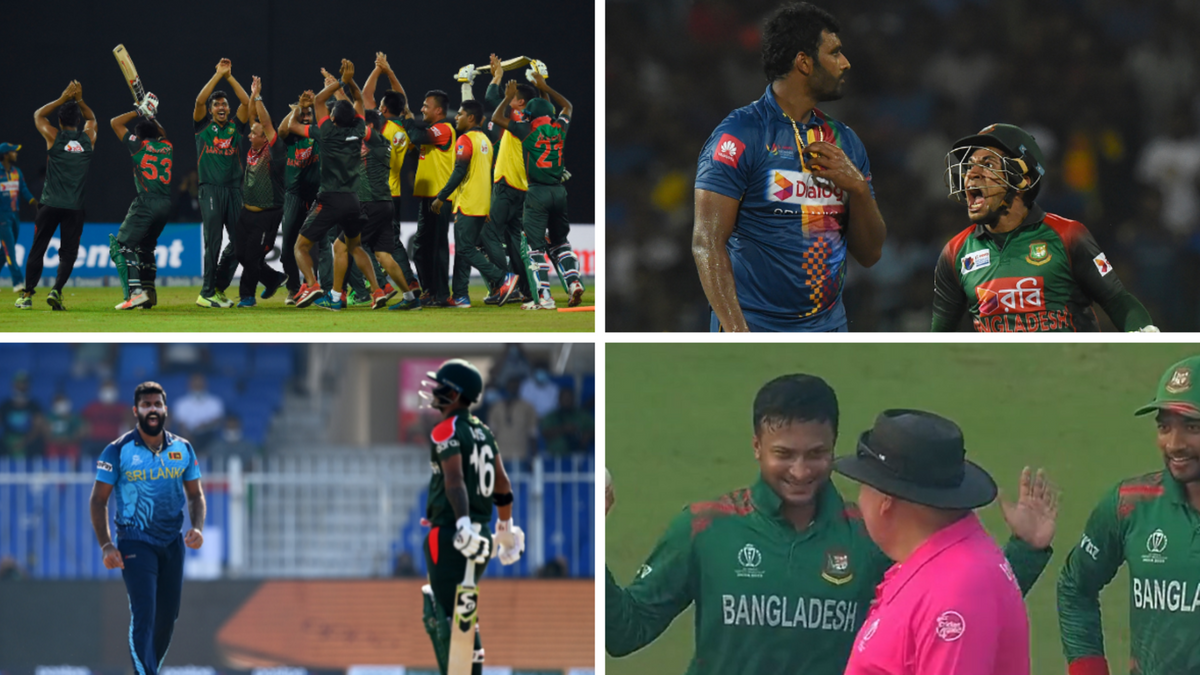
The Bangladesh–Sri Lanka rivalry is probably the most curious in the long history of international cricket.
To bet on the World Cup with our Match Centre Partners bet365 head here.
Cricketing rivalries are often built around contexts that stretch beyond the realm of the sport. For decades, cricket was restricted to British colonies and later, the Commonwealth: until 1963, the ICC was known as the Imperial Cricket Conference.
That made England the team to beat – not necessarily for cricketing reasons. The Ashes was the oldest of the international rivalries featuring England, but certainly not the last.
The political tension between India and Pakistan made them arch rivals. In recent times, Pakistan and Afghanistan have shared a similar relationship. The 15th-century Wars of the Roses between Lancaster and York lent their name to Lancashire-Yorkshire cricketing contests. The Karachi-Lahore rivalry spills over to cricket when their PSL franchises, the Kings and the Qalandars, take to the field.
Rivalries can also be built around geographical proximity – Australia and New Zealand, Surrey and Middlesex, Melbourne Renegades and Stars. There are also pure cricketing contests, built around intense on-field clashes for supremacy over time – India and Australia, Chennai Super Kings and Mumbai Indians, and so on.
The rivalry between Bangladesh and Sri Lanka does not fulfill any of this. To start with, it had its root in – of all things – celebrations by Bangladesh left-arm spinner Nazmul Islam Apu.
Nazmul’s celebrations involved – sometimes while kneeling – raising both hands in the air to mimic a snake’s hood. He had probably picked up the idea when his BPL teammate Daren Sammy had nicknamed him ‘The Snake’.
It is not clear when the tag naagin (female snake) stuck to Nazmul’s antics, but the celebrations gained publicity when Sri Lanka toured Bangladesh in 2018, the year after Chandika Hathurasingha’s first stint as Bangladesh head coach had come to an end.
The second T20I, at Sylhet, was an otherwise forgotten affair. Sri Lanka made 210-4, and summoned part-timer Danushka Gunathilaka when Bangladesh were 132-8 in 18 overs. Gunathilaka rounded up the innings in four balls. After all was over, he faced non-striker Nazmul and broke into naagin celebrations.
The rivalry took root at that point. Later that year, Bangladesh travelled to Sri Lanka for Nidahas Trophy. Mushfiqur Rahim’s magnificent 35-ball 72 not out helped Bangladesh seal the first league match between the sides. Mushfiqur celebrated – yes, naagin style.
When the two teams met again in the last league match, India, the third team, had already qualified for the final. This was the match where Sri Lanka versus Bangladesh became an acrimonious affair.
Amila Aponso had already set the tone by breaking into a snake-charmer’s dance, clearly an ‘antidote’ to the naagin. When Isuru Udana claimed Bangladesh captain Shakib Al Hasan, they needed 23 in two overs with four wickets in hand. Akila Dananjaya held the catch, and broke into a naagin dance.
With 12 to score in five balls, Udana bowled a bouncer that Mustafizur Rahman missed. Mahmudullah called for a bye and made it, but Mustafizur was run out at the non-striker’s end.
At this point, a visibly miffed Shakib summoned the batters to return and effectively concede the match, for – in his opinion – the umpires should have no-balled the bouncer for height. The Bangladesh players argued with the Sri Lanka fielders from the dugout, and things seemed to go downhill rapidly.
Thankfully, Mahmudullah retained sanity amidst all this, and sealed the match in three hits. To nobody’s surprise, the entire Bangladesh unit broke into a naagin dance.
After the match, the door of the Bangladesh dressing-room was found shattered. “An outward-facing camera caught a number of Bangladesh players racing down the steps in front of their dressing room as bits of glass were strewn on the stairs,” reported ESPNcricinfo.
Things were never the same again between the two teams. The naagin celebrations, otherwise harmless, became the motif of the rivalry.
At the final, a packed Premadasa Stadium cheered for India as Dinesh Karthik pulled off a heist. The banner “no more cobra dance, cheer 4 India” did not fail to attract the television camera. Inside the commentary box, even Sunil Gavaskar imitated the snake, as did the crowd once the match got over.
The rivalry has continued ever since. The Asia Cup clash later that year and 2022, thus, was hardly about cricket. It was a shame, for Lasith Malinga’s terrific opening spell, Mushfiqur Rahim’s gorgeous 144, Tamim Iqbal’s one-handed heroics, and outstanding bowling from Bangladesh all went under the radar.
Even a global lockdown could not relieve the tension, Ahead of the 2022 Asia Cup game, Sri Lanka captain Dasun Shanaka announced that Bangladesh boasted of only two bowlers in their line-up. Bangladesh coach Khaled Mahmud responded that Sri Lanka had two fewer.
Here, the cricketers weighed in. Four years ago, substitute fielder Nurul Hasan had been fined after he was involved in the Nidahas Trophy clash. Now, he predicted a Bangladesh win.
We are clear favorites tonight in the #AsiaCup2022. It's just a matter of time before we execute our first-class bowling, batting, and team efforts, In Shaa Allah. Let's show who are the better side on the field. 😉💪
— Nurul Hasan Sohan (@sohan18official) September 1, 2022
By then, the intensity had spread to the former cricketers as well, even some of the biggest names.
Looks like it’s time for @OfficialSLC bowlers to show the class and batters to show who they are on the field..😉👍#AsiaCup2022 https://t.co/txWm7wH4nC
— Mahela Jayawardena (@MahelaJay) August 31, 2022
Sri Lanka beat Bangladesh and went on to win the tournament. When they met again at the 2023 edition, all seemed forgotten, and the two teams seemed set to turn over a new leaf.
Then, at the 2023 World Cup, Angelo Mathews asked for his helmet to be replaced…








